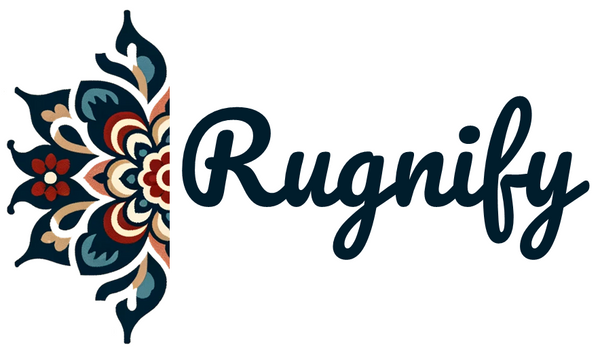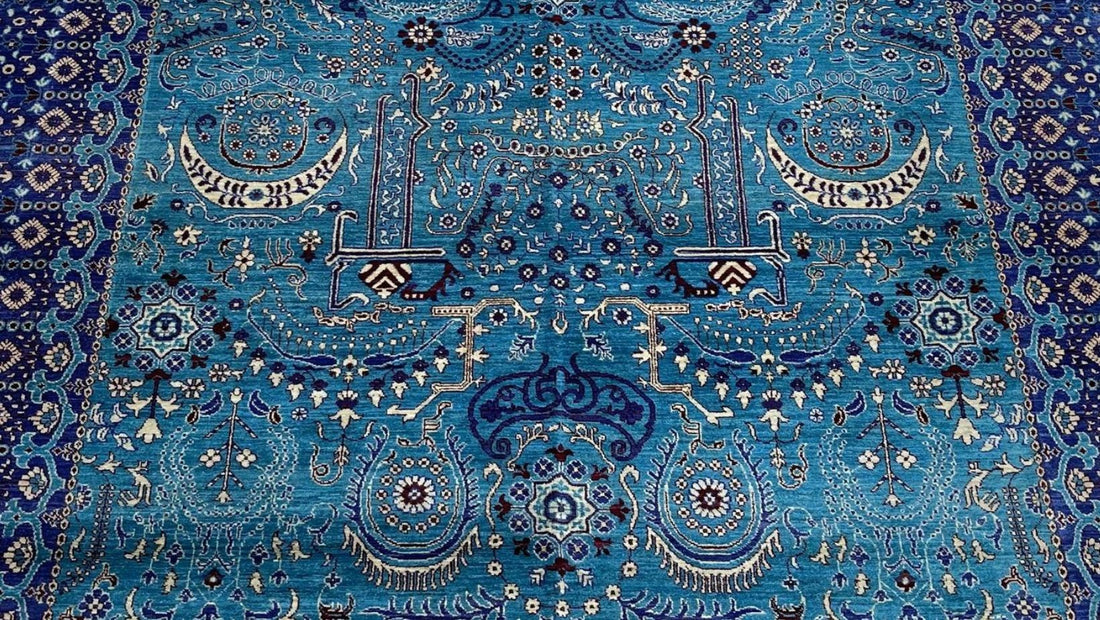Afghan rugs are hand-knotted works of art. From the deep reds of natural dye rugs to the detailed tribal patterns, these carpets have captivated homeowners, interior designers, collectors, and artists worldwide. In this post, we’ll explore why Afghan rugs are important, share some fun rug facts, and answer common questions about their longevity, symbolism, cost, and even how wool rugs interact with dust mites and pests.
1. Why Are Afghan Rugs Important?
Afghan rugs hold a special place in the world of textiles for both cultural and practical reasons. Culturally, they are a living testament to Afghanistan’s rich history and resilient artisans. Many families consider their rugs prized possessions and even heirlooms, rugs are often gifted, inherited, or used in special occasions, symbolizing the country’s heritage and identity.
Economically, the craft is hugely significant: over 1 million Afghans are employed in the carpet industry, making rugs one of Afghanistan’s major exports. This industry has gained global recognition, Afghan rugs even won international awards (sometimes called the “Carpet Oscars”) in 2008, 2013, and 2014 at exhibitions in Hamburg. Practically speaking, Afghan rugs are valued for their exceptional quality. They are made of 100% high grade wool and natural dyes, resulting in rugs known for their durability and deep, lasting colors. Each authentic Afghan rug is knotted by hand, often by multiple artisans working for months.
(Interested in experiencing this heritage yourself? Explore Rugnify’s collection of handmade Afghan rugs to find a piece of history for your home.)
2. What Are Some Fun Facts About Rugs?
Rugs have a fascinating history and some surprising trivia. Here are a few fun facts about rugs (including Afghan rugs) that might surprise you:
Ancient Origins: The oldest known carpet in the world is the Pazyryk rug, which is about 2,400–2,500 years old. It was found frozen in a Siberian tomb and is still on display today, a testament to how long a well-made rug can endure!
Millions of Knots: Handmade rugs can contain millions of knots. Skilled Afghan weavers tie each knot by hand, some large carpets take upwards of 6-9 months to complete due to the high knot count and intricate designs. This incredible effort is part of why these rugs are so cherished (and often expensive).
War Rugs: Afghan rug makers have innovated even in adversity. During conflicts in the late 20th century, some weavers began incorporating war icons into their designs replacing flowers or gul medallions with images of AK-47 rifles, tanks, and helicopters. These “war rugs” serve as unique historical records of Afghanistan’s experience.
Award-Winning Carpets: Afghan rugs are celebrated worldwide. They have won top honors at international carpet shows, highlighting their intricate artistry and exceptional quality on the global stag. In fact, buyers often refer to them as among the finest oriental rugs for their deep natural colors and sturdy weave.
Rug Heritage in Families: In Afghanistan and many rug-weaving cultures, rugs are often passed down through generations. It’s not uncommon for an Afghan family to own a rug that is 40, 50, or even 100 years old. These heirloom rugs “maintain their rugged beauty and possibly even improve with age” thanks to the high-quality wool and dyes, showing just how long-lasting a great rug can be.
3. How Long Do Afghan Rugs Last?
One of the hallmarks of a genuine Afghan rug is its longevity. These rugs are built to last decades – even generations – especially with proper care. The combination of high-quality, hand-spun wool and dense, hand-knotted construction makes them exceptionally durable. In many Afghan families, rugs from parents or grandparents are still in use, having been lovingly maintained over the years. In fact, lots of Afghan households have rugs that go back through generations, and the pieces “maintain their rugged beauty and possibly even improve with age” due to their superb craftsmanship and premium materials.
In practical terms, an Afghan rug can easily last 20–50 years or more. Some studies on carpet lifespan note that wool carpets can last significantly longer than synthetics – often 20+ years with heavy use, and even longer in low-traffic areas. Antique Afghan rugs (over 50-100 years old) on the market show that with the right conditions (regular cleaning, avoiding moth infestations, etc.), these rugs truly stand the test of time. The natural lanolin oils in wool also help the fibers resist wear and tear. Over decades, the colors of a good Afghan rug will remain vivid (natural dyes don’t fade easily), and the thick wool pile can handle foot traffic gracefully.
Tip: To help your Afghan rug last as long as possible, keep it clean (vacuum gently), rotate it every year or so to even out wear, and address spills or moth issues promptly. With such care, your handmade Afghan rug can literally become a family heirloom.
4. What Does the Afghan Rug Symbolize?
In Afghanistan, a rug is not just a household item – it’s imbued with symbolic meaning and cultural significance. Broadly speaking, the Afghan rug symbolizes the culture, tradition, and resilience of the Afghan people. Each rug tells a story: from the choice of motifs and colors to the very act of weaving (often done in communal settings by women artisans), it represents community and continuity of heritage.
Many Afghan rugs feature designs that have specific symbolic meanings. For example, the octagonal gul motifs in Turkoman and Bokhara rugs are often considered tribal emblems or talismans of protection. Floral patterns might symbolize fertility and abundance, while geometric patterns can represent the nomadic lifestyle or simply a weaver’s individual artistic signature. Interestingly, one Rugnify carpet description notes that an Afghan Baluchi rug with rich colors and geometric patterns “symbolizes protection and cultural heritage” in its design. Thus, the very patterns woven into the rug can carry meanings like protection, luck, or status.
On a broader level, Afghan rugs as a whole have come to symbolize Afghanistan’s rich cultural identity on the world stage. Despite decades of conflict and hardship, Afghan weavers continued their craft, and the rugs became a symbol of resilience and creativity. In Afghan homes, a beautiful hand-knotted rug is a source of pride and a sign of hospitality to guests. They’re often used in important life events and celebrations.
5. Why Are Afghan Rugs So Expensive?
If you’ve ever shopped for a high-quality Afghan rug, you might have experienced a bit of sticker shock. Authentic handmade rugs can indeed carry high price tags, and there are good reasons for that. Afghan rugs are expensive because of the immense labor, skill, and quality materials that go into each one. It’s said that when you buy an Afghan rug, you’re paying for “a work of art that will stand the test of time,” not just a floor covering.
Here are the key factors that drive the price of Afghan rugs:
Labor-Intensive Craftsmanship: Every Afghan rug is hand-knotted by skilled artisans. Weavers spend countless hours (often months) tying woolen knots one by one. A medium-sized rug can easily contain hundreds of thousands to millions of knots. This meticulous process, done without shortcuts, dramatically increases the value. As an example, Afghan rugs typically have moderate to high knot densities (80–160 knots per square inch in many cases), contributing to fine detail but also taking a lot of time to produce. Skilled weavers are earning wages for all those months of work, which is reflected in the rug’s price.
High-Quality Materials: Afghan rugs are made from premium wool, often Ghazni wool, which is known for its strength and luster. The wool is hand-spun and then colored with natural dyes derived from plants, roots, and insects. Natural dyeing is more time-consuming and costly than using chemical dyes, but it gives rugs their celebrated rich hues and variation. These top-notch materials (high-grade wool, natural dyes, sturdy cotton foundations) ensure the rug is durable and beautiful, but they do cost more. Essentially, you’re investing in a rug that won’t fall apart or look drab in a few years, it can last generations (hence better value long-term).
Artistic and Cultural Value: Afghan rugs carry intangible value as well, they are cultural artifacts. There’s a certain prestige and rarity to owning an authentic Afghan tribal rug, especially certain styles or older pieces. This historical and artistic value can raise prices, particularly for antique Afghan rugs or those with very unique patterns.
Afghan rugs are expensive because they’re worth it, you’re purchasing a durable, one-of-a-kind piece of functional art. The price encompasses the skilled handwork of the artisan, the quality of wool and natural dyes, and the lasting beauty and use you will enjoy for decades. As the saying goes, “you get what you pay for,” and with authentic Afghan carpets, you’re getting excellence crafted by hand.
Final Thoughts: Afghan rugs beautifully blend craftsmanship, culture, and functional decor. We’ve covered why they are important and unique, shared fun historical tidbits, and tackled practical questions about their durability and care. Whether you’re a homeowner looking to cozy up a living room, an interior designer aiming for that perfect bohemian-chic statement piece, a collector of global art, or an artist seeking inspiration in ancient patterns, an Afghan rug has something to offer you. Their rich colors and symbols tell stories that can transform a space and spark conversation.
If you’re inspired by these facts and insights, you might consider bringing one into your own life. Nothing quite compares to the look and feel of an authentic handmade Afghan rug, with its dense wool pile and vibrant natural dyes. Not only will it elevate your décor, it will also carry forward a tradition that has been part of human civilization for centuries.




